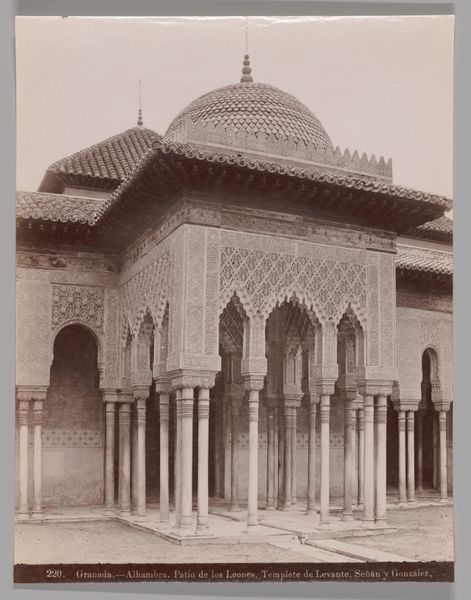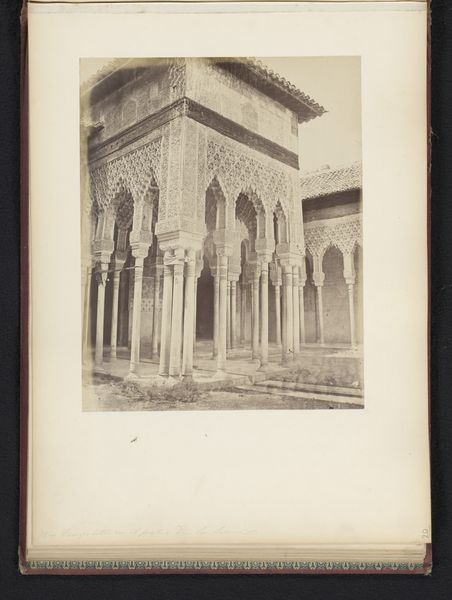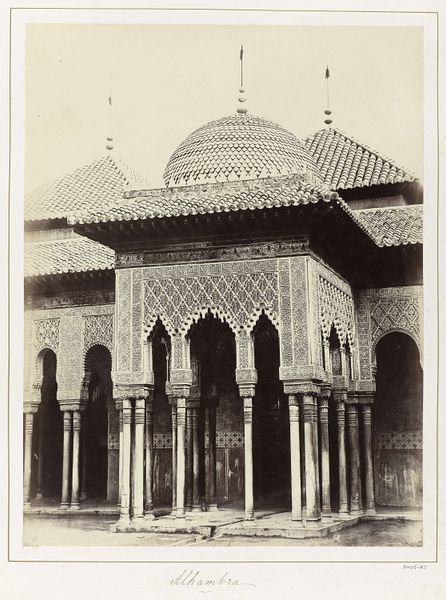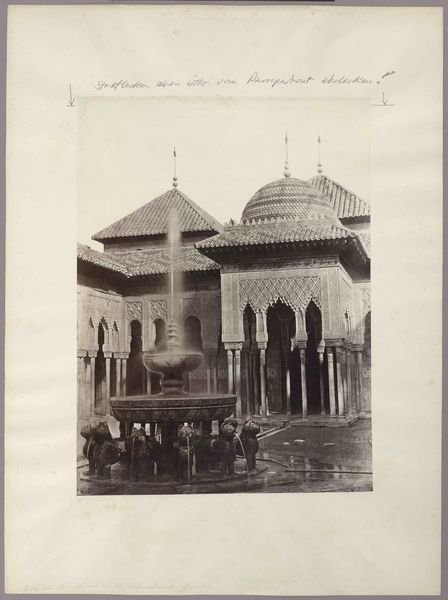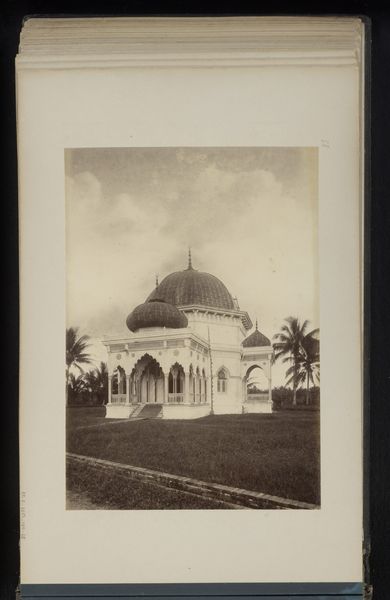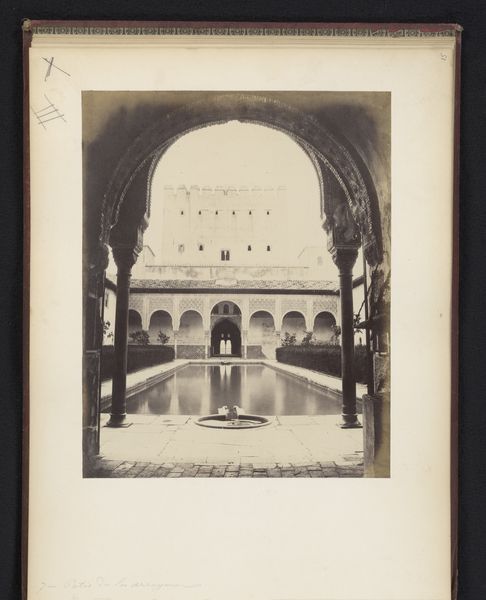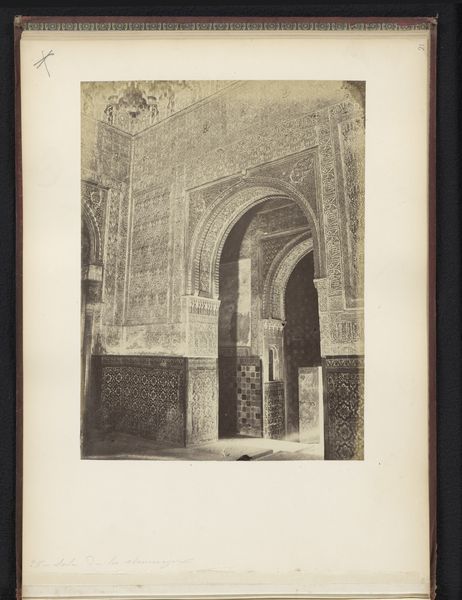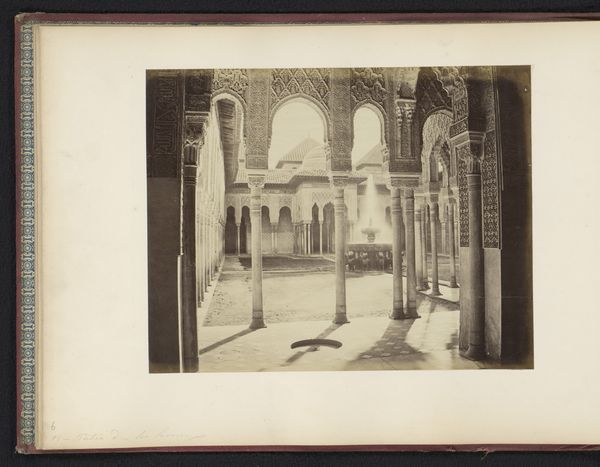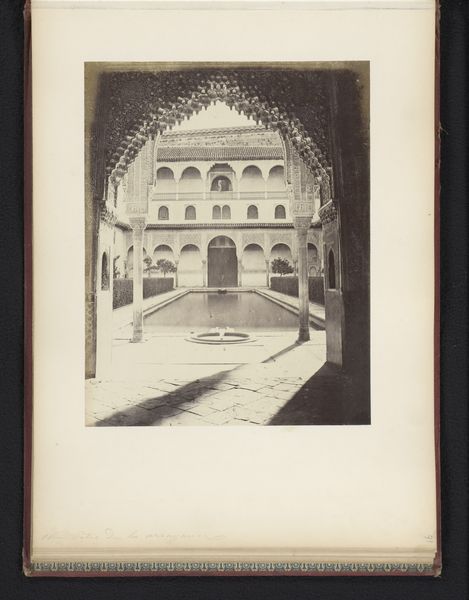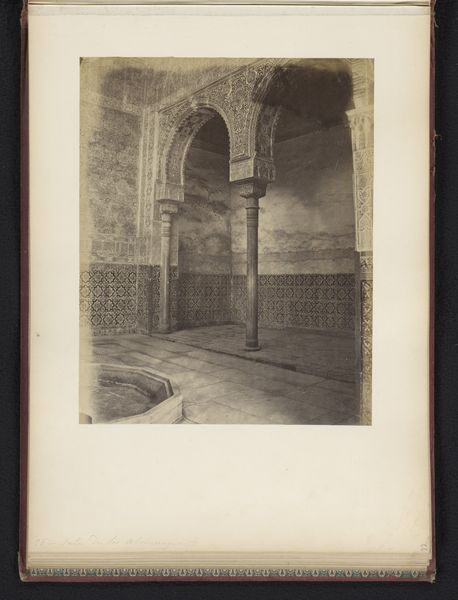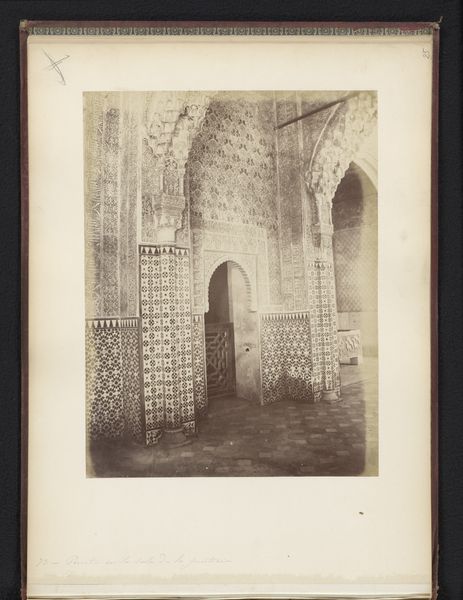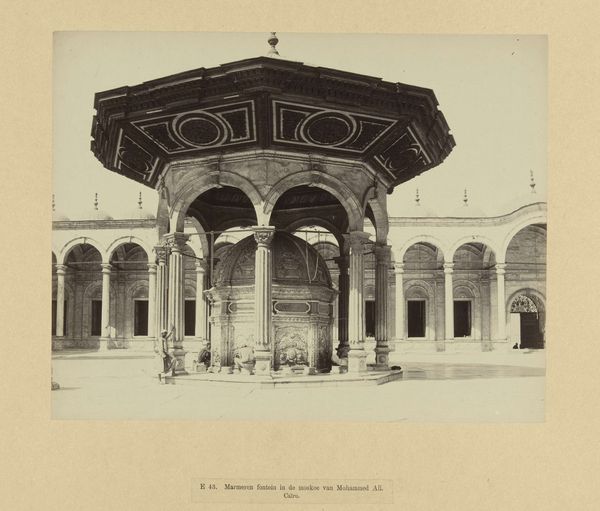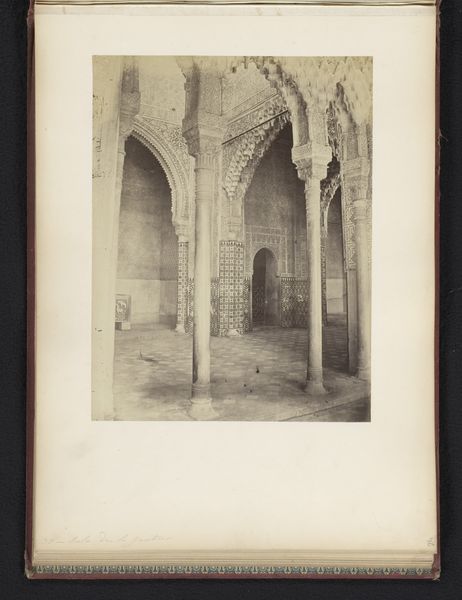
photography, albumen-print
#
sculpture
#
appropriation
#
landscape
#
photography
#
carved
#
cityscape
#
islamic-art
#
albumen-print
Dimensions: height 242 mm, width 192 mm
Copyright: Rijks Museum: Open Domain
Curator: Let’s discuss this remarkable albumen print titled "Gezicht op de Leeuwenhof in het Alhambra te Granada, Spanje," dating back to 1906 by C Maufsaise. What are your first impressions? Editor: A strong sense of stillness. The monochrome palette and the rigid architecture create an imposing yet somber mood. The carved elements almost look like lace, yet the materiality seems quite solid and enduring. Curator: Absolutely. The photographic rendering invites an in-depth inspection of the structural repetitions and the interplay between light and shadow. Consider the pillars and their careful arrangement. How do they contribute to the image’s underlying geometry? Editor: For me, it is all about the meticulous detail. The labor that must have gone into carving these patterns is immense. I wonder, though, about the colonial context in which this photograph was created. How does Maufsaise engage with the site of the Alhambra as both a spectacle of Islamic artistry and a monument claimed by the Spanish Empire? Curator: That’s a critical point. The Alhambra’s artistic vocabulary—its arches, calligraphy, and intricate geometric designs—are undeniable features, composing a harmonious balance within the frame, regardless of the broader narrative. But let's think more abstractly. Semiotically, what does this controlled perspective convey about space, representation, and the photographer’s vision? Editor: I think the means of producing this image also matter significantly. Albumen prints required a lengthy and involved process. The artist's engagement is also one that implicates a larger network of labor and skill required to bring such beauty and precision into view. Curator: Your perspective enriches our understanding of the artistic practices prevalent at the time and reminds us of the many hands involved. Ultimately, "Gezicht op de Leeuwenhof" functions as more than just an architectural record; it's an aesthetic object inviting prolonged visual contemplation. Editor: Yes, and through our exchange, the dialogue between object and context allows for new ways of interpreting both artistry and craftsmanship in the photograph.
Comments
No comments
Be the first to comment and join the conversation on the ultimate creative platform.
